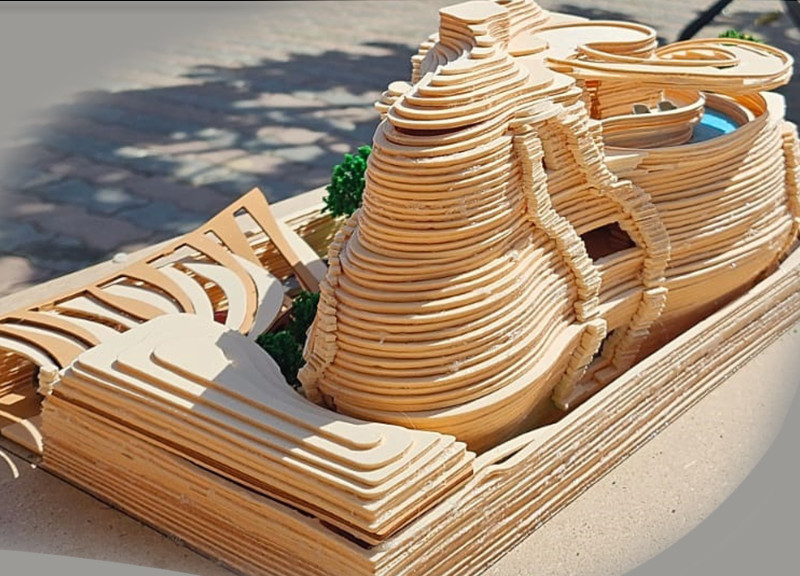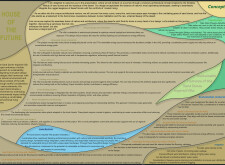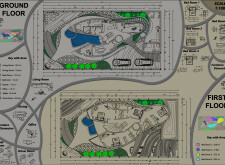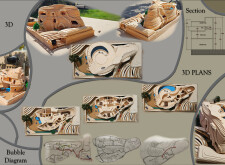5 key facts about this project
**Overview**
Located in the UAE's desert landscape, the Sand Dunes-Inspired Villa project aims to integrate human habitation with the surrounding natural environment. This design embraces the aesthetics of the desert while prioritizing sustainability and energy efficiency. The architectural framework reflects the region’s unique characteristics, allowing for the creation of a dwelling that remains in harmony with its topography and climate.
**Sustainable Architectural Strategies**
The design incorporates several sustainable strategies to minimize environmental impact. Key features include passive solar design, which optimizes the villa's orientation to maximize natural light while reducing solar heat gain, thereby minimizing reliance on artificial lighting and cooling systems. Photovoltaic panels are integrated into the roof to capitalize on the abundant solar energy available in the region, ensuring a sustainable power supply. The layout encourages natural ventilation, enhancing comfort without extensive mechanical reliance. Additionally, water efficiency measures, such as rainwater harvesting and sustainable fixtures, contribute to the villa's resource management in an arid climate.
**Material Selection and Cultural Relevance**
Materials used in the construction of the villa are selected for their environmental performance and relevance to local traditions. The use of adobe or rammed earth for exterior walls provides excellent thermal mass, while recycled steel enhances structural integrity and reduces waste. High-performance glass with low-emissivity coatings is strategically placed to improve energy efficiency and optimize views. Sustainably sourced wood is utilized for interior elements, reflecting local craftsmanship and adding warmth to the living spaces. This approach not only addresses ecological concerns but also emphasizes the connection to the cultural heritage of the UAE, reinforcing the project’s commitment to sustainability and community engagement.






















































